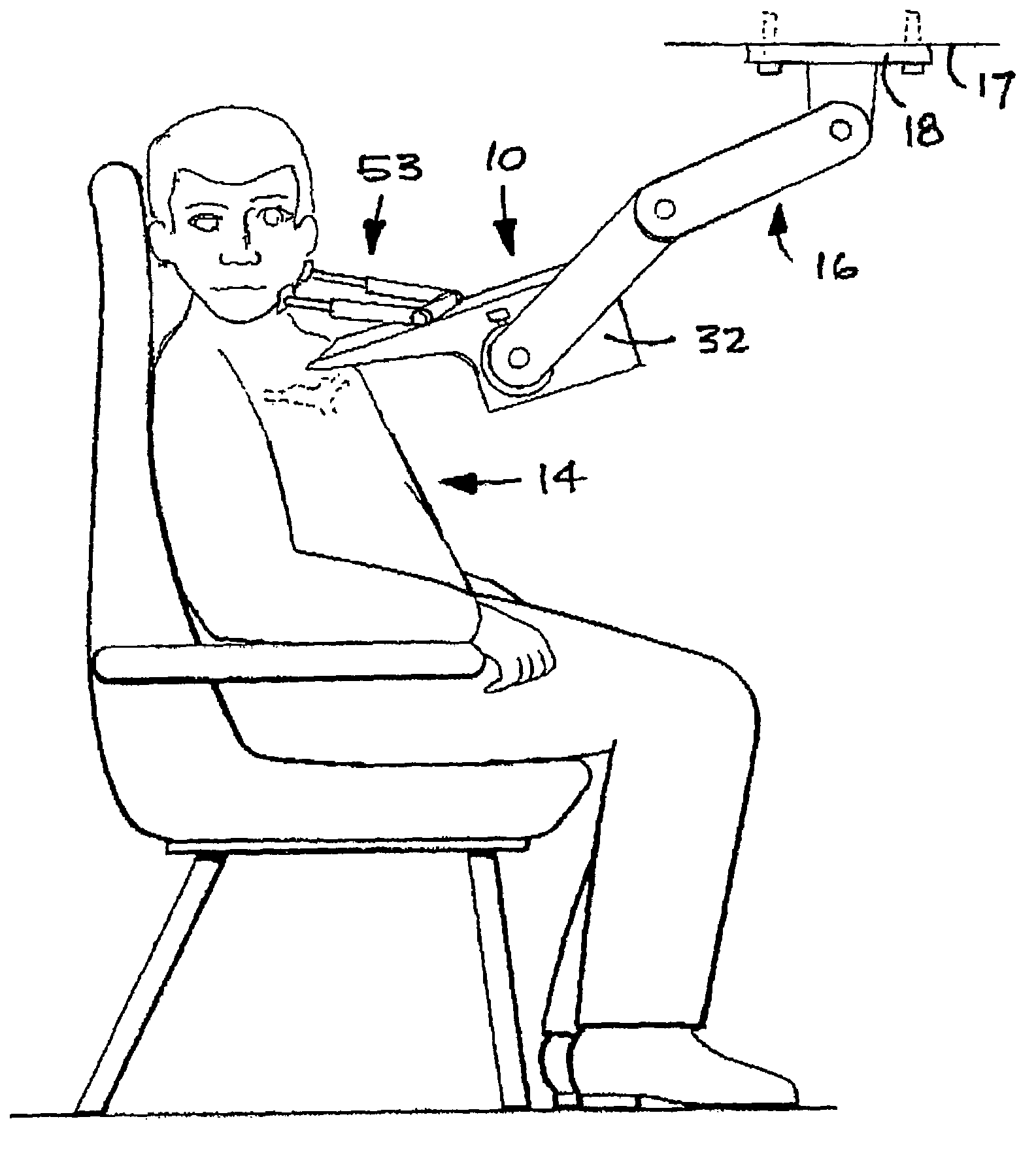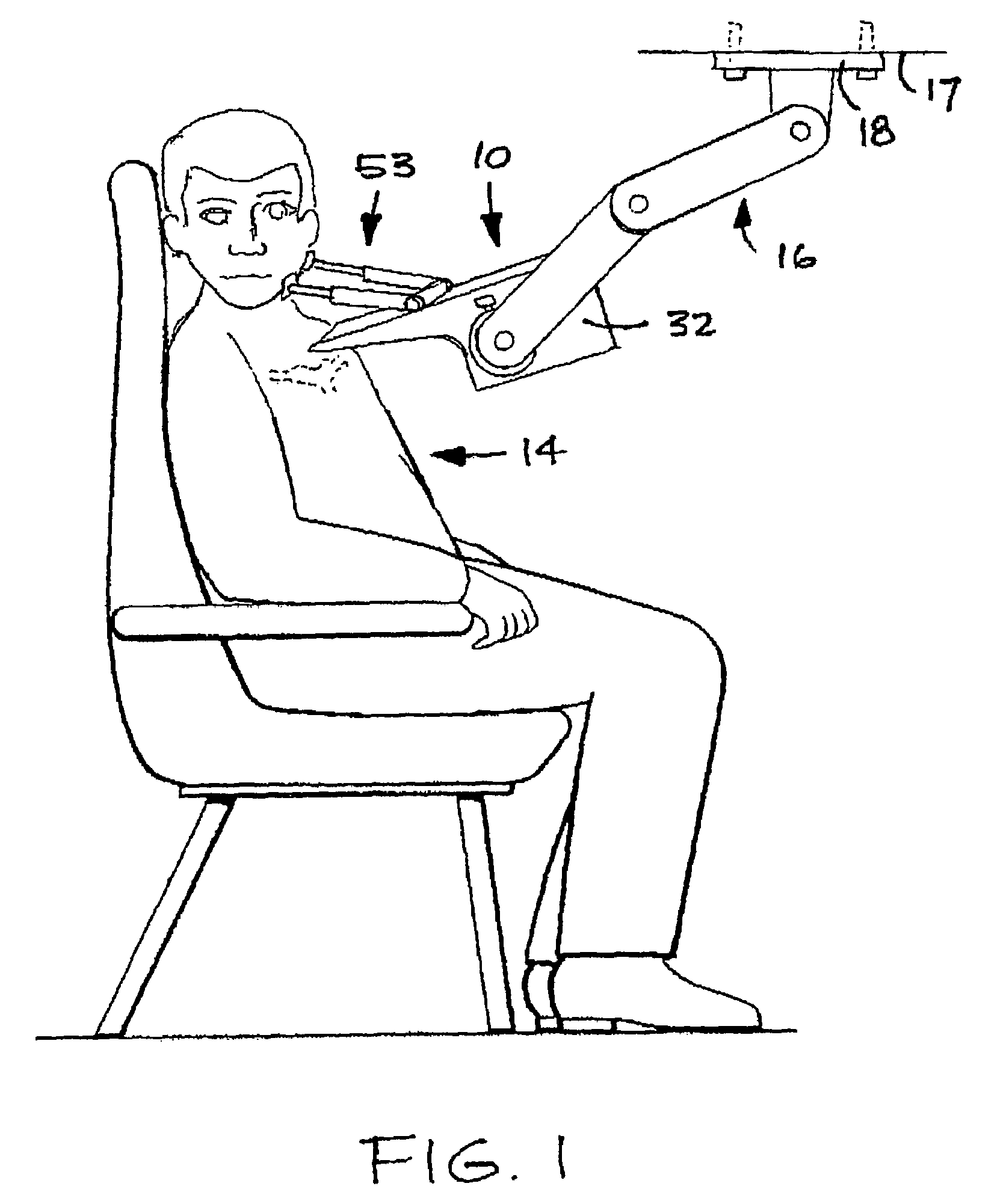Methods of and apparatus for monitoring heart motions
a non-invasive and heart-moving technology, applied in the field of methods and apparatus for non-invasive monitoring of heart motion, can solve the problems of insufficient coupling between non-invasive mechanical methods and external movement generated by the heart, inaccurate mechanical methods, and low use value, so as to reduce the cost of quality control and provide the display with substantially less noise level
- Summary
- Abstract
- Description
- Claims
- Application Information
AI Technical Summary
Benefits of technology
Problems solved by technology
Method used
Image
Examples
Embodiment Construction
[0044]To facilitate understanding of the various modes of operation of the apparatus of FIG. 1, which is a sensor apparatus indicated generally by reference numeral 10 in FIG. 1, the sensor apparatus 10 is shown in coupled relationship to subjects in different positions in FIGS. 1 to 4 of the accompanying drawings. Accordingly, FIGS. 1 to 4 will firstly be described below, before a more detailed description of the construction and operation of the sensor apparatus 10.
[0045]Measurement of the heart's motion, such as its acceleration, is important as the motion of the heart is a function of force which arises from a change in momentum of the heart mass and the ejection of blood during the various phases of the heart cycle. When a heart abnormality appears, the pattern and the amplitude of these forces change, thereby yielding diagnostic value.
[0046]The heart generates both strong and weak forces, which are all of importance in diagnosis. The method and apparatus described below enable...
PUM
 Login to View More
Login to View More Abstract
Description
Claims
Application Information
 Login to View More
Login to View More - R&D
- Intellectual Property
- Life Sciences
- Materials
- Tech Scout
- Unparalleled Data Quality
- Higher Quality Content
- 60% Fewer Hallucinations
Browse by: Latest US Patents, China's latest patents, Technical Efficacy Thesaurus, Application Domain, Technology Topic, Popular Technical Reports.
© 2025 PatSnap. All rights reserved.Legal|Privacy policy|Modern Slavery Act Transparency Statement|Sitemap|About US| Contact US: help@patsnap.com



